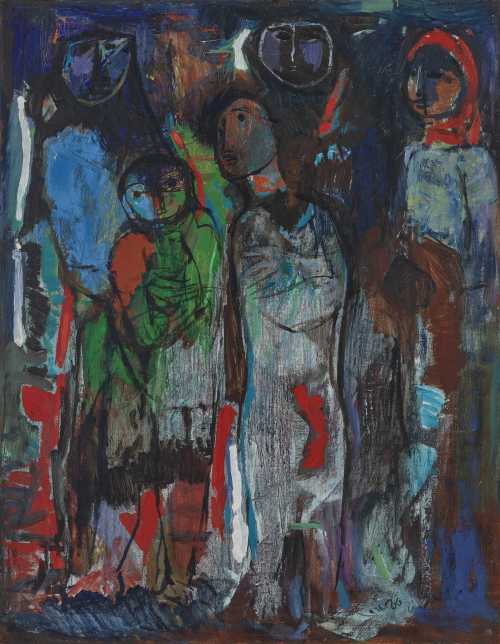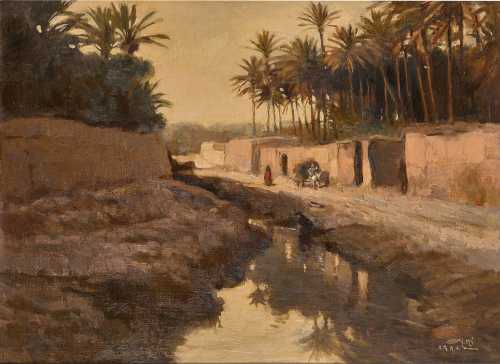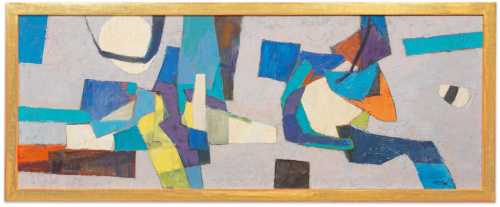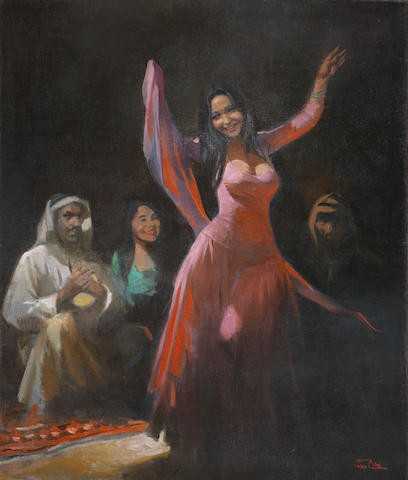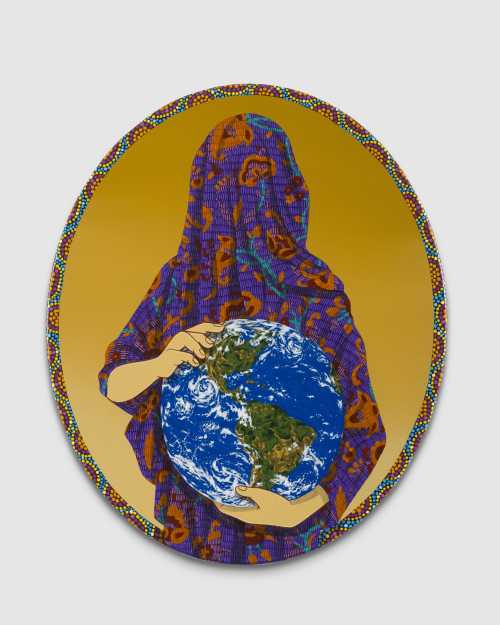- Family Group 1964
- Oil on canvas
- Painting
- 46 * 59.7 cm
- signed and dated in Arabic (lower right)
20 October 2021
Estimation
£25,000
34,540 USD
-
£35,000
48,356 USD
Unsold
Artwork Description
The following texts for lots 11-13 are by Dr Ahmed Naji, independent researcher and cultural advisor on art in Iraq and the Arab world
“The doyen of Iraqi painters”, this is how Faeq Hassan was described by one of the leading art critics and intellectuals in Iraq and the Middle East; Jabra Ibrahim Jabra. Jabra’s assessment of Hassan was based on the artist’s oeuvre, which had spanned four decades by 1983 when Jabra published his concise survey titled “Grass Roots of Iraqi Art”. In April 1965, the very same critic questioned “How great can a ‘good’ artist be?” critiquing Hassan’s one-man show at the American Friends of the Middle East in Baghdad, which was Hassan’s second show at the centre (the first was in 1964). Combining Jabra’s two statements on Hassan from 1965 and 1983, the question could be rephrased: How ‘great’ can 'the doyen' of Iraqi painters’ be?
Hassan was the doyen of Iraqi painters because of his legacy both as an artist and as an art educator. He established the Department of Painting and Sculpture at Baghdad’s Institute of Fine Art in 1939 and he trained generations of artists and art teachers in Baghdad, until the subsequent formation of the Academy of Fine Art in 1958/1959. Almost a decade later in 1967, Hassan was awarded the title ‘Professor of Art’ when the Academy of Fine Art became affiliated with Baghdad University, making him one of only two artists to hold this title, the other artist was his former student and colleague Ismail al-Sheikhly (Iraq 1924-2002).
Alongside his teaching career, Hassan was an influential artist who formed one of the first art groups in Baghdad in 1950 under the official name ‘Société Primitive’, however the group was largely known as Ar-Ruwwād, an Arabic term which has two meanings: the most common one translates as the Pioneers, an appropriate name for the group as its members were pioneering modernism under the leadership of Hassan. The lesser-known translation comes from one of the group members Dr Khalid al-Kassab who explained in his memoirs that the term meant simply “the frequent visitors”, as the group’s main activity was arranging trips and outings to ‘visit’ new locations in Baghdad and other cities in order to depict local scenes and local people. Accepting both translations can offer a more accurate picture of Hassan and his group; they pioneered applying modern art to their local environment, which was a defining trend of the 1950s where they competed and interacted with a more conceptual group led by Jewad Selim and Shakir Hassan al-Said knowns as Baghdad Modern Art Group, formed in 1951.
Hassan’s greatness lies in his instinctive approach to painting without caring much to commit or develop a distinctive style; an all-encompassing oeuvre with shifts in styles from 1940s impressionism, to 1950s cubism, followed by a notable 1960s expressionism then ending with an ”intensely Iraqi” form of realism in the 1970s and 80s. These shifts were underscored by a highly accomplished technical versatility that Hassan was recognised for. Incidentally, the etiology of these shifts can be explored through Hassan’s three paintings amongst the private collection of Orin and Rita Parker who lived in Baghdad between 1960 and 1965 and hosted two solo exhibitions for Hassan at the American Friends of the Middle East, in Baghdad in 1964 and 1965.
Family Group, 1964 is a unique expressionist masterpiece utilising colour and contrast to offer a snapshot in time of a struggling family, a theme also explored by Shaker Hassan Al Said in his 1960 Vagabond Family. This painting by Hassan is one of the prime examples of his expressionist phase which Jabra described as “one of the richest periods of his career. He charged his paintings, which now became intense and sombre, with images of poverty and suffering, a strange mixture of compassion and horror, and succeeded in bringing up to the surface the hidden agonies of his people, with faces and figures often suggestive of nightmares.”
Dr Ahmed Naji is the author of Under the Palm Trees: Modern Iraqi Art with Mohamed Makiya and Jewad Selim, Rizzoli New York, 2019. (Instagram: Ahmednaji_Al Said)
More lots by Faegh Hassan
Realized Price
55,040 USD
Min Estimate
24,010 USD
Max Estimate
39,438 USD
Average Artwork Worth
+73.687%
Average Growth of Artwork Worth
Sales Performance Against Estimates
Average & Median Sold Lot Value
2021 - 2025
Performance vs. Estimate
2021 - 2025
Sell-through Rate
2021 - 2025
Similar Artworks

Held by Earth
Estimation
$1,500
-
$1,500
Sale Date
Artsy Auction
-
5 November 2025
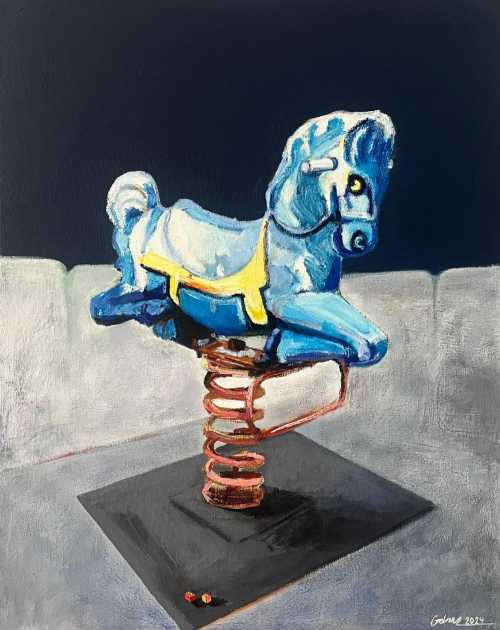
Layer of Beginnings
